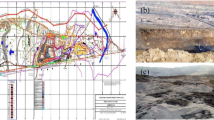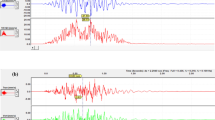Abstract
Ore extractions, rock excavations and structures’ demolitions have been quickly and cost-effectively conducted by blasting. Blasting, when cautiously performed, will have lessened the potential of vibratory impacts to nearby structures. Adverse impacts may not only affect structures, but may involve workers’ harm, the public’s response, historic or vibration-sensitive features, geologic hazards (slope instability, sinkhole collapse, …), and natural-resource (flora and fauna) concerns. Documented cases have noted these adverse impacts triggered by blasting. Merely monitoring air blast and vibration has no ability to identify or minimize the array of potential adverse impacts. The three primary and many secondary impacts (described in the paper) can be controlled by the blasting parameters used and, for some projects, by additional mitigating measures. Typically, the Blasting Contractor has the understanding and capability to avoid the impacts to workers and structures, and to lessen the public’s response. Achieving the required goal of the blasting project may require reduced blasting efficiency to minimize the risk of inducing secondary impacts. Detailed investigations of the potential impacts, geophysical assessments of both the sites and triggering parameter levels for those potential impacts, and/or the necessity for mitigating actions may be required for some blasting projects. Two case histories cite the proper approach toward lessening the potential for human, geologic-hazard, natural-resource, and structural impacts without diminishing the capacity to effectively perform the blasting. Blasting can be conducted to achieve the project’s goals with a low potential of triggering adverse impacts.
Access this chapter
Tax calculation will be finalised at checkout
Purchases are for personal use only
Similar content being viewed by others
References
California Department of Transportation: San Francisco-Oakland Bay Bridge (SFOBB), East Span Seismic Safety Project, SFOBB Old Spans Piers E3-E5 Implosions Project Report, EA 04-01357 or EFIS#: 04-16000287, 141 p with appendices (2017)
Dowding, C.H.: Blast Vibration Monitoring and Control. Prentice-Hall, Inc., 297 p, ISBN: 0-13-078197-5 (1985)
Hempen, G.L.: Destructive water-borne pressure waves. In: Proceedings of the Sixth International Conference on Case Histories in Geotechnical Engineering, Arlington, VA, Missouri University of Science and Technology, Rolla, MO, 11 p (2008)
Hempen, G.L.: Blast-vibration consulting, picture taken during field work, personal communication (2015)
Hempen, G.L.: Blasting. In: Bobrowsky, P., Marker, B. (eds.) Encyclopedia of Engineering Geology, Encyclopedia of Earth Sciences Series, Springer, Cham, 3 p, Online ISBN: 978-3-319-12127-7 (2018)
Keefer, D.K.: Landslides Caused by Earthquakes. Geological Society of America, v 95, April 1984, pp 406–421 (1984)
Keevin, T.M., Hempen, G.L.: The Environmental Effects of Underwater Explosions with Methods to Mitigate Impacts, Legacy Report (Department of Defense study grant), U.S. Army Corps of Engineers, St. Louis District, St. Louis, MO, 145 p (1997)
Kramer, S.L.: Geotechnical Earthquake Engineering. Prentice-Hall, Inc., 653 p, ISBN: 0-13-374943-6 (1996)
Skeggs, D., Lang, G., Hempen, G.L., Combs, R., Clemmons, M.: Controlled blasting for CCP landfill construction. In: World of Coal Ash Conference, Landfill Session V, Paper 206, Lexington KY, 11 p (2017)
US Army Corps of Engineers: Systematic Drilling & Blasting for Surface Excavations, EM 1110-2-3800. Washington, DC, 260 p & 2 appendices (in press, expected September 2018)
Williams, J.H., Vineyard, J.D.: Geologic indicators of subsidence and collapse. In: Karst Terrain in Missouri. 55th Annual Meeting, Transportation Research Board, Washington, D.C., January 21, 1976, 20 p (1976)
Author information
Authors and Affiliations
Corresponding author
Editor information
Editors and Affiliations
Rights and permissions
Copyright information
© 2019 Springer Nature Switzerland AG
About this paper
Cite this paper
Hempen, G.L. (2019). Reducing Impacts Potentially Triggered by Blasting. In: Shakoor, A., Cato, K. (eds) IAEG/AEG Annual Meeting Proceedings, San Francisco, California, 2018—Volume 6. Springer, Cham. https://doi.org/10.1007/978-3-319-93142-5_17
Download citation
DOI: https://doi.org/10.1007/978-3-319-93142-5_17
Published:
Publisher Name: Springer, Cham
Print ISBN: 978-3-319-93141-8
Online ISBN: 978-3-319-93142-5
eBook Packages: Earth and Environmental ScienceEarth and Environmental Science (R0)




